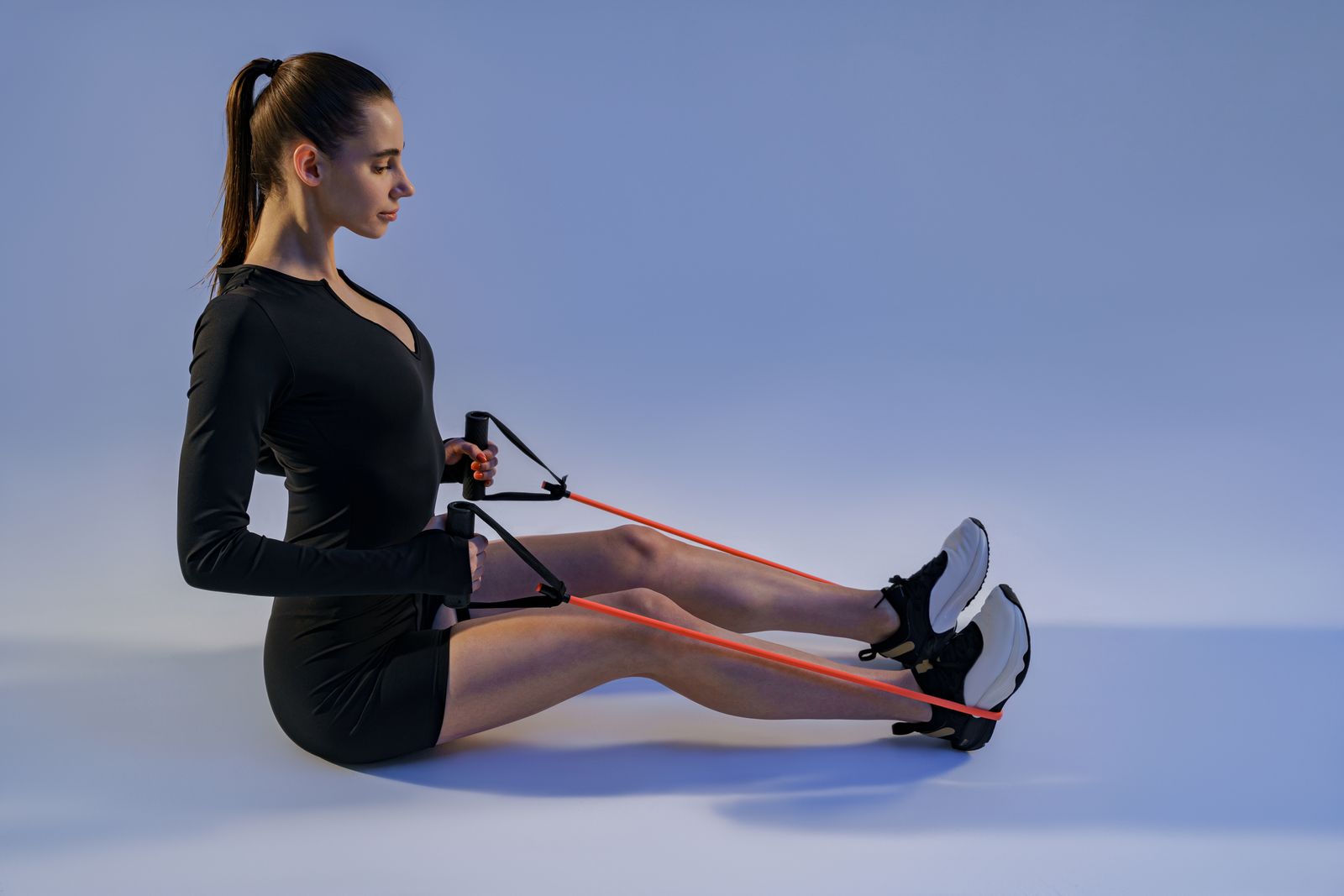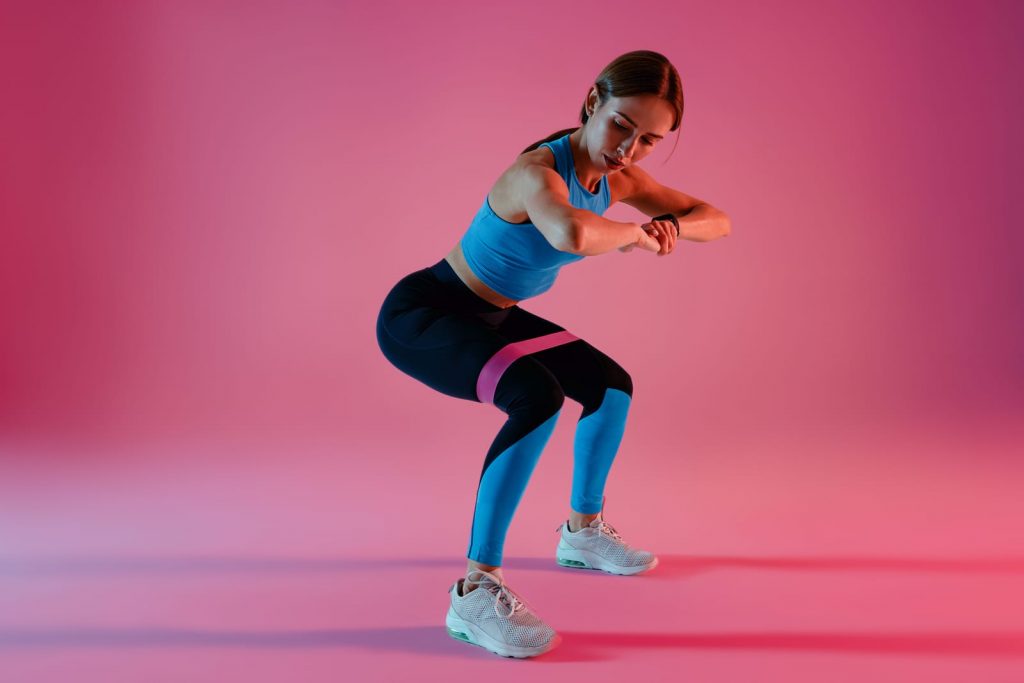
Execute a Comprehensive Body Workout Using Gym Bands
Did you know that gym bands can provide up to 20-40 pounds of resistance, making them an incredibly effective tool for full-body workouts? Whether you’re a beginner or a seasoned fitness enthusiast, incorporating gym bands into your routine can take your workout to the next level.
From targeting major muscle groups to enhancing flexibility and stability, these simple yet powerful tools offer a wide range of exercises suitable for all fitness levels.
Benefits of Resistance Band Training
Versatile and Portable
They are a fantastic tool for performing a whole-body workout, especially when you’re on the go. They are lightweight, compact, and easy to pack, making them perfect for travel or outdoor workouts. Whether you’re at home, in a hotel room, or at the park, they allow you to maintain your fitness routine without needing access to a gym.
You can perform various exercises, targeting different muscle groups such as arms, legs, chest, back, and core. For example:
-
Bicep curls
-
Squats
-
Chest presses
-
Rows
Suitable for All Fitness Levels
One of the most significant advantages is that they cater to individuals of all fitness levels. Whether you’re just starting your fitness journey or are an experienced athlete looking to enhance your training regimen further, they offer varying levels of resistance. This means that beginners can start with lighter resistance and gradually progress as they become stronger.
The consistent tension ensures that your muscles are engaged throughout the entire range of motion during each exercise. This is crucial for effective muscle building and toning.
Choosing the Right Resistance Bands for Your Workout
Consider Your Fitness Goals
When choosing them for a whole-body workout, it’s essential to consider your fitness goals. If you’re aiming to build strength and muscle mass, opt for a heavy one. On the other hand, if you’re focusing on endurance and flexibility, a light resistance band may be more suitable.
Durability and Comfort
Look for something made of durable materials that can withstand repeated stretching without snapping or breaking during workouts. This ensures safety during your exercise routine. Prioritize something with comfortable handles or loops that provide a secure grip while performing various movements.
Read Also: Tips to Use Training Bands for Flexibility and Tone
Upper-body toning with Resistance Band Exercises
Targeting Arm Muscles
To perform a whole-body workout, start by targeting and strengthening your arm muscles. You can achieve this by doing bicep curls. These curls effectively work the biceps, helping to build strength and definition in your arms. By incorporating advanced repetitions, you can gradually increase the challenge for better results.
Another way to engage your arms is through tricep exercises like overhead presses. This exercise targets the triceps brachii while also engaging other upper body muscles such as the deltoids and upper back.
Engaging Back and Shoulders
In addition to toning your arms, it’s essential to engage your back and shoulders during a whole-body workout session with gym bands. Incorporate rows into your routine to target not only the middle trapezius but also the rhomboids, which are crucial for maintaining good posture and overall back strength.
For shoulder engagement, include shoulder presses in your routine. This exercise primarily works the deltoid muscles while also activating other shoulder-stabilizing muscles such as the serratus anterior and upper trapezius.
Enhancing Chest Muscles
To complete an effective whole-body workout, focus on enhancing chest muscles through resistance band chest presses and flyes. These exercises target different areas of the chest while engaging various supporting muscle groups like the triceps, shoulders, and even some engagement from the biceps.
Core Engagement and Posture Improvement Exercises

Strengthen Your Core
To strengthen your core using gym bands, incorporate exercises like standing twists, Russian twists, and plank variations. For standing twists, anchor the band at chest height, hold one end in each hand, and rotate your torso from side to side. With Russian twists, sit on the ground with legs bent and lean back slightly while holding the handles. Rotate your torso to touch the band to the ground on each side.
Improve Posture
Improve posture by incorporating resistance band pull-apart and seated rows into your workout routine. The pull-apart targets the postural muscles that help maintain good posture throughout daily activities. Sit or stand with feet shoulder-width apart while holding an elastic exercise in front of you at chest height. Pull both ends outward until they reach shoulder level.
Seated rows also aid in improving posture by targeting key muscles such as the erector spinae that support a strong and healthy spine alignment during movements like bending over or lifting objects.
Incorporating these exercises into a whole-body workout routine will not only strengthen core muscles but also contribute significantly to better overall body stability.
Read Also: Innovative Ways to Enhance Your Workout with Exercise Bands
Resistance Band Workout Schedule for Beginners
Frequency of Workouts
Start your workout journey with two to three days per week. This frequency allows your body to adapt and recover between sessions, preventing overtraining.
They provide a versatile way to work out different muscle groups without the need for heavy equipment. By following this schedule, beginners can gradually build strength and endurance while minimizing the risk of injury.
Dynamic Warm-Up
Before diving into your resistance exercises, it’s crucial to kick off each session with a dynamic warm-up. This step is essential for preparing your muscles and joints for the upcoming workout, reducing the risk of strains or sprains.
Dynamic warm-ups typically involve movements that mimic those in your workout routine. For example, you might incorporate arm circles, leg swings, or torso twists. These movements help increase blood flow to the muscles and improve flexibility before engaging in more intense exercises.
Balanced Workout Routine
To ensure a well-rounded approach to fitness, alternate between upper body, lower body, and core exercises during each workout session. This balanced approach targets various muscle groups throughout your body while allowing adequate recovery time between workouts targeting specific areas.
For instance:
-
Upper Body: Bicep curls, shoulder presses.
-
Lower Body: Squats, lunges.
-
Core: Russian twists, standing side bends.
Building Muscle and Comparing Bands to Free Weights
Constant Tension for Muscle Growth
They provide constant tension, which is essential for muscle growth and strength gains. When you use them during your workout, the muscles are forced to work harder throughout the entire range of motion. This continuous tension helps in activating more muscle fibres, leading to improved muscle development.
For example, when performing a bicep curl, the tension remains consistent from the beginning of the movement until your arm reaches full contraction. This sustained tension stimulates greater muscle activation compared to free weights or machines that rely on gravity as their primary source of resistance.
By incorporating bodyweight exercises such as push-ups and squats along with movements, you engage multiple muscle groups, ensuring a comprehensive workout that targets different areas of your body simultaneously.
Read Also: Tips for Incorporating Target Resistance Bands in Your Exercise
Safer Alternative to Free Weights
Compared to free weights, using them reduces the risk of joint strain or injury. The smooth and constant tension minimizes sudden jerking or momentum-based movements that can lead to strains or sprains when using free weights.
Moreover, due to their versatility and portability,they allow you to perform various exercises at different angles without compromising form or safety. For instance, utilizing them for shoulder presses enables smooth and controlled movements while maintaining proper alignment throughout each repetition.
Summary
You’ve gained insight into creating a workout schedule for beginners and discovered how resistance bands compare to free weights in muscle building.
Now it’s time to put this knowledge into action. Grab your gym bands, set up a workout space, and start incorporating these exercises into your fitness routine. Remember, consistency is key, so aim for regular workouts to see the best results.
Whether you’re a beginner or an experienced fitness enthusiast, these exercises can take your whole-body workout to the next level. Get ready to feel the burn and enjoy the rewards of a stronger, more toned physique!
